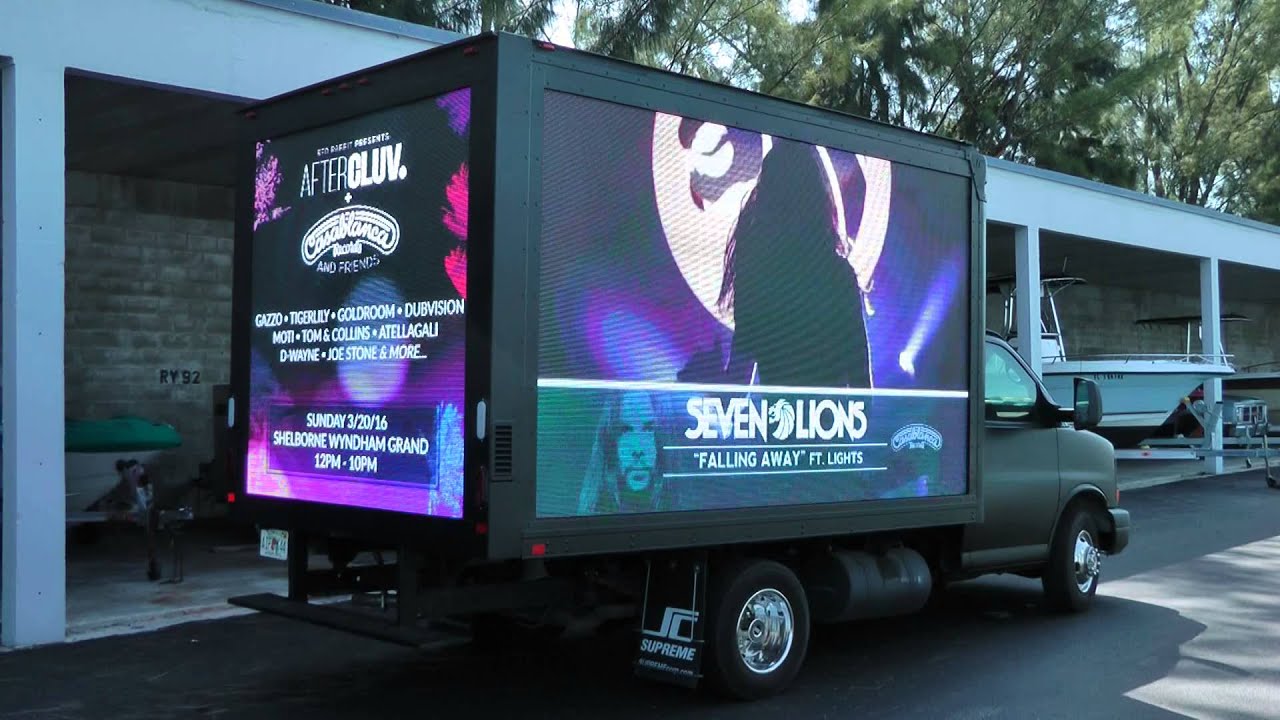Business
Revolutionizing Outdoor Advertising: The Rise of Mobile Billboard Trucks

In the modern age, our senses are perpetually inundated with advertising. From the websites we visit to the roads we travel, there is a constant barrage of brands vying for our attention. Amid this flood of marketing messages, businesses are in an ongoing battle to stand out. That’s where mobile billboard trucks come into the picture; not only do they offer a distinctive twist to traditional advertising, but they also pave the way for interactive and targeted campaigns that captivate audiences in new and dynamic ways.
The Mobile Billboard Truck Phenomenon
Mobile billboard trucks, often known as advertising trucks or ad trucks, are specially designed vehicles that carry large-scale advertisements on their sides. Unlike static billboards fixed at one location, these trucks are anything but stationary. They traverse cities and towns, making strategic stops or even coordinating routes to maximize exposure in areas with high foot and vehicle traffic.
One of the distinctive advantages of using a mobile billboard truck is its ability to garner attention through motion. The human eye is naturally drawn to movement, making these roving billboards far more likely to catch the gaze of potential customers. Bright, bold graphics and the sheer novelty of a moving advertisement make for a memorable impression that can bolster brand recognition and pique consumers’ interest.
Furthermore, the flexibility of routes allows for hyper-local targeting. If a store is opening in a particular neighborhood, a mobile billboard truck can circulate that area exclusively, directly engaging the local demographic. The same tactic can be used to target attendees at events such as concerts, festivals, or trade shows, leveraging the concentration of a particular audience to maximize the ad’s impact.
Interactivity and Technological Integration
Today’s mobile billboard trucks are not just about displaying a static image. They’ve evolved into interactive platforms that incorporate various technologies to engage consumers. Many advertising trucks are now equipped with high-resolution LED screens that can display animated content, live streams, and even interactive games that audiences can play using their smartphones.
Some trucks have external speakers and Wi-Fi connectivity, enabling them to become mobile hotspots that facilitate direct interaction between the brand and the consumer. Imagine walking past a truck and receiving a prompt on your smartphone for a free sample or discount coupon—the immediate engagement potential is significant.
Technological advancements also empower these trucks with GPS tracking, making it simpler for advertisers to track their campaign’s reach and effectiveness. They can analyze routes, dwell times, and audience engagement to iterate and improve upon campaigns, making data-driven decisions to enhance ROI.
Sustainability and Regulations
Ad trucks have historically faced scrutiny over their environmental impact and adherence to city regulations. However, the industry is adapting quickly to these challenges. Newer models of mobile billboard trucks feature eco-friendly designs with lower emissions, electric or hybrid engines, and solar-powered lighting, mitigating their carbon footprint.
From a regulatory perspective, companies that deploy mobile advertising trucks must navigate varying restrictions, which might include specific traffic regulations, idling limitations, and advertising content guidelines. By staying informed and compliant, mobile billboard truck operators can operate smoothly and establish their approach as a legitimate and reputable form of outdoor advertising.
Maximizing the Benefits of Mobile Billboard Trucks
For businesses considering mobile billboard trucks as a part of their marketing strategy, successful campaigns rely on more than just putting an ad on wheels. Here are key considerations to optimizing the impact of a mobile billboard truck campaign:
1. Design Matters
The design of the advertisement needs to be visually compelling and easily readable from a distance. Since these trucks are on the move, passersby only have a few seconds to take in the message. High-contrast colors, bold fonts, and clear calls to action are essential components of an effective mobile billboard design.
2. Timing and Location
Alignment with relevant events, holidays, or peak traffic hours can significantly improve an ad truck’s effectiveness. Coordinate the truck’s schedule to coincide with times when your target demographic is most likely to be present. For instance, routing the truck around lunchtime in a bustling business district could be ideal for a new fast-casual restaurant promotion.
3. Interact and Involve
Integrate interactive elements by encouraging people to take photos with the truck, share them on social media, or participate in contests. Not only does this create a memorable experience for the audience, but it also extends the campaign’s reach digitally.
4. Measure and Adapt
Employ data-gathering tools to track engagement and adapt accordingly. If certain routes or times are yielding higher engagement rates, focus efforts there. Conversely, be ready to pivot if some strategies are underperforming. Continuous improvement is key to reaping the full benefits of mobile billboard advertising.
Conclusion
Mobile billboard trucks represent a fresh, engaging, and flexible approach to outdoor advertising. By combining the appeal of mobility with technological enhancements and interactivity, ad trucks take the static aspect out of traditional billboards and infuse it with life. As businesses seek innovative ways to break through the clutter and genuinely connect with their audience, mobile billboard trucks stand out as a viable and increasingly sophisticated option.





















